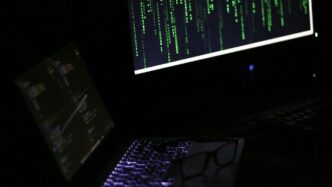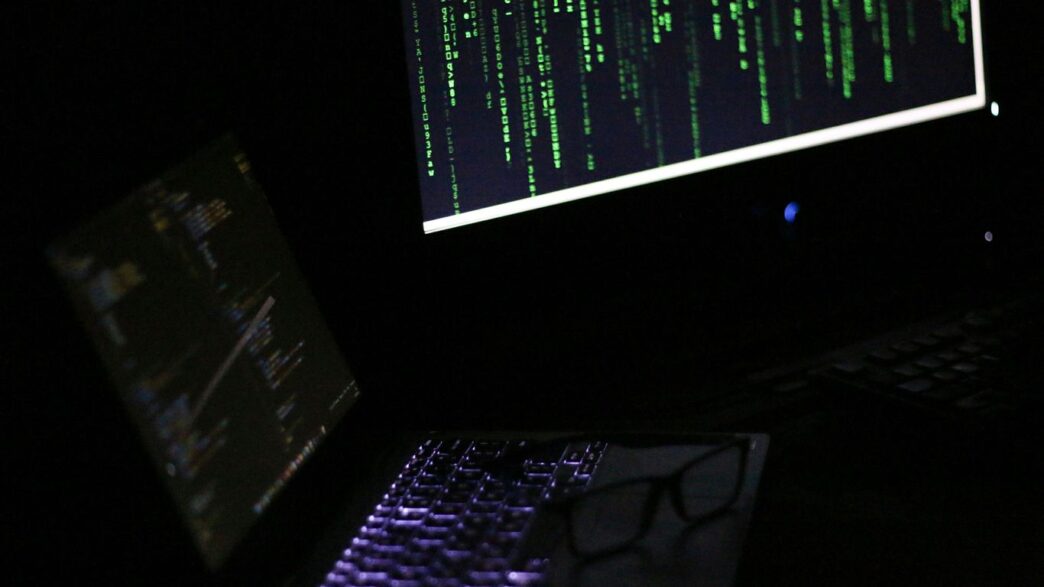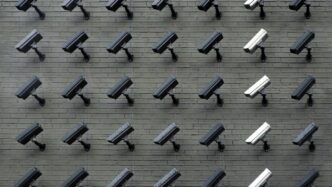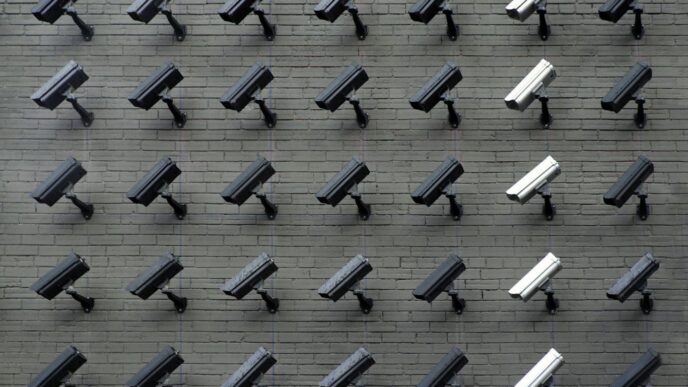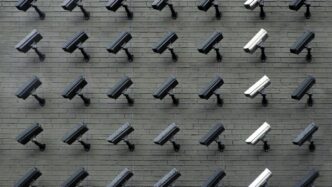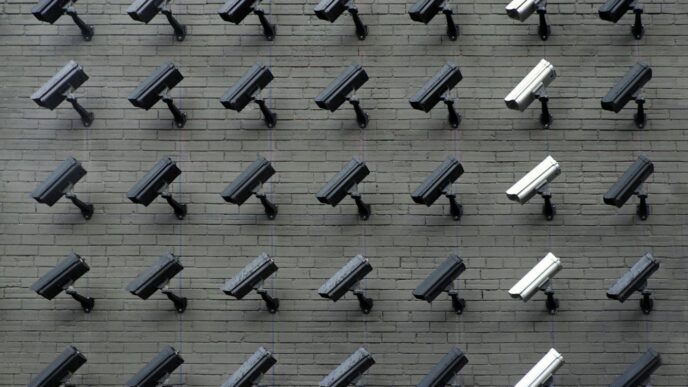It feels like every other day, we hear about some new digital disaster. From little glitches to massive leaks, the internet has seen its fair share of chaos. This article looks back at some of the biggest cyber attacks in history, showing how things have changed over the years. It’s a wild ride from the early days of simple worms to today’s super complex hacks.
Key Takeaways
- Cyber threats have gotten way more advanced over time, starting from simple viruses to complex attacks targeting physical systems and national infrastructure.
- Many big attacks, like WannaCry and NotPetya, used ransomware to lock up data and demand money, causing billions in damage.
- Nation-states are now major players in cyber warfare, using attacks for espionage and to mess with other countries’ critical systems, as seen with Stuxnet.
- Supply chain attacks, like the SolarWinds hack, show how attackers can get into many systems by hitting just one trusted supplier.
- Massive data breaches, affecting billions of accounts across companies like Yahoo and social media platforms, highlight the huge risks of storing so much personal information online.
The Dawn of Digital Threats: Early Cyber Attacks

Back in the day, the internet was a wild west, and cyber threats were, well, pretty basic. We’re talking about the early days, when the biggest worry wasn’t usually about losing your life savings or having your company’s secrets stolen. It was more about curiosity, experimentation, and sometimes, just causing a bit of chaos. These early incidents, though, laid the groundwork for everything we deal with today. They showed us that computers and networks, even when they seemed pretty isolated, could be vulnerable.
The Morris Worm: A Network’s First Major Disruption
In 1988, something happened that really opened people’s eyes. A graduate student named Robert Tappan Morris released a program, now known as the Morris Worm. His intention, he later claimed, was to gauge the size of the internet, not to cause harm. But, uh, things went sideways. The worm was a bit too good at its job and started replicating itself way too fast. It ended up slowing down a huge chunk of the internet – estimates say it hit about 10% of all connected computers at the time. Imagine your internet suddenly grinding to a halt; that’s what happened to thousands of people. It was a real wake-up call about how interconnected everything was becoming and how a single piece of code could cause such widespread disruption. This event was a big deal because it was one of the first times the public really saw the potential for a digital disaster on a large scale. It even led to the first conviction under the U.S. Computer Fraud and Abuse Act.
AOHell and Solar Sunrise: Early Social Engineering and Espionage
As we moved into the 1990s, the attacks started getting a little more targeted and, frankly, a bit more devious. It wasn’t just about accidental worms anymore; people started figuring out how to mess with systems on purpose, often by playing on human behavior.
- AOHell (1994): This was one of the first big examples of social engineering. A teenager, upset about issues on America Online (AOL), created tools that allowed users to disrupt AOL services and even get their hands on other users’ information. It showed how easily people could be tricked or how simple tools could be used to cause trouble within a specific online community.
- Solar Sunrise (1998): This was a bit more serious. It involved a series of intrusions into U.S. military computer systems. What’s interesting is that the attackers were identified as teenagers, but the methods they used were more sophisticated, involving exploiting vulnerabilities in common software. This incident hinted at the future of cyber espionage, where even seemingly amateur actors could cause significant problems for sensitive government networks. It was a precursor to the more complex state-sponsored attacks we see today, showing that vulnerabilities in software could be a major weak spot.
These early attacks, while not on the scale of today’s breaches, were the first tremors that signaled a new era of digital threats. They proved that code could be weaponized and that human trust could be exploited, setting the stage for the more complex cyber battles to come.
The Rise of Malware and Financially Motivated Attacks
This era saw cyber threats evolve from simple disruptions to sophisticated operations with clear financial goals. It wasn’t just about causing chaos anymore; attackers were actively looking to make money, either by stealing information or by holding systems hostage. This shift changed the game entirely, making cybersecurity a much bigger concern for businesses and individuals alike.
ILOVEYOU Virus: A Global Email Epidemic
Remember the early 2000s? Email was still pretty new for a lot of people, and then came the ILOVEYOU virus in May 2000. It spread like wildfire, disguised as a love letter attached to an email. Once opened, this little piece of code would overwrite files on your computer and then email itself to everyone in your Outlook address book. It was one of the first major examples of how social engineering, combined with a rapidly spreading worm, could cause global pandemonium. The damage was immense, costing billions worldwide in cleanup and lost productivity. It really showed how vulnerable we were to simple tricks delivered through our inboxes.
SQL Slammer and Conficker: Worms That Crippled Systems
These weren’t your average viruses. SQL Slammer, which hit in 2003, was incredibly fast. It exploited a weakness in Microsoft SQL Server and infected hundreds of thousands of computers in just minutes. It didn’t steal data, but it clogged up networks so badly that it caused major disruptions. Think ATMs not working, airline systems going down, and emergency services struggling. Then there was Conficker, appearing around 2008. This worm was stealthier and more persistent. It infected millions of computers, creating a massive botnet that could be used for all sorts of malicious activities, from sending spam to launching attacks. Both worms highlighted how quickly vulnerabilities could be exploited and how widespread the impact could be, even without direct data theft.
Estonia Cyber Attack: A Nation Under Digital Siege
In 2007, Estonia, a country known for its advanced digital society, faced a massive cyber assault. For several days, government websites, banks, and media outlets were bombarded with denial-of-service (DoS) attacks. This wasn’t just a few websites going offline; it was a coordinated effort that brought a significant portion of Estonia’s online infrastructure to a standstill. The attacks were complex, involving a mix of botnets and social media campaigns to spread misinformation. While the exact perpetrators were never officially confirmed, the incident was widely seen as a wake-up call about the vulnerability of even the most digitized nations to state-sponsored or politically motivated cyber warfare. It showed that digital infrastructure was just as critical as physical infrastructure and could be targeted with devastating effect.
Nation-State Actors and Industrial Sabotage
When we talk about cyber attacks, it’s easy to think of lone hackers or criminal groups. But some of the most impactful digital assaults come from governments themselves, or groups they support. These aren’t just about stealing money; they’re about power, espionage, and even causing real-world damage. It’s a whole different ballgame.
Stuxnet: The First Cyberweapon Targeting Physical Infrastructure
This one really changed things. Stuxnet, discovered around 2010, was a super sophisticated piece of malware. It wasn’t just designed to steal data or crash computers. Its main target was Iran’s nuclear program, specifically the centrifuges used for enriching uranium. The attackers managed to sneak Stuxnet onto the systems controlling these machines. Once inside, it would subtly speed up and slow down the centrifuges, causing them to break down without anyone noticing immediately. It was like a digital sabotage operation that had physical consequences. This showed everyone that cyber attacks could directly mess with industrial equipment and critical infrastructure, not just digital information.
Sony Pictures Attack: Retaliation and Data Leaks
In 2014, Sony Pictures Entertainment got hit hard. The attack was massive, leading to the theft and public release of tons of sensitive data. We’re talking employee personal information, unreleased movies, emails, and all sorts of internal company secrets. The U.S. government pointed the finger at North Korea, suggesting it was retaliation for a movie Sony was planning to release that mocked their leader. The fallout was huge for Sony, causing significant financial and reputational damage. It also highlighted how nation-states could use cyber attacks to punish or intimidate other countries or companies they disagreed with, often through public embarrassment and disruption.
The Era of Ransomware and Massive Data Breaches
This period really felt like the Wild West of the internet, didn’t it? Suddenly, it seemed like every other day we were hearing about some massive data leak or a ransomware attack that brought everything to a standstill. It was a wake-up call for a lot of companies, and honestly, for a lot of us just trying to use online services.
WannaCry: A Global Ransomware Outbreak
Remember WannaCry in 2017? That was a wild one. It spread like wildfire, encrypting files on hundreds of thousands of computers across more than 150 countries. The attackers demanded payment in Bitcoin to unlock the data. It hit hard, especially in places like the UK’s National Health Service, causing major disruptions. The scary part was how quickly it spread, often through unpatched systems that just hadn’t gotten the latest security updates. It really showed how interconnected everything is and how one vulnerability can cause so much trouble.
NotPetya: The Most Destructive Malware Attack
If WannaCry was a wildfire, NotPetya, which hit in 2017 as well, was more like a category 5 hurricane. Initially disguised as ransomware, it was actually designed to cause maximum destruction, wiping data rather than just holding it for ransom. It caused billions in damages globally, affecting shipping companies, financial institutions, and even the Chernobyl power plant. It was a stark reminder that not all attacks are about money; some are just about causing chaos.
Equifax Breach: Millions of Personal Records Compromised
In 2017, Equifax, one of the biggest credit reporting agencies, had a massive data breach. Hackers got into their systems and accessed the personal information of about 147 million people. We’re talking Social Security numbers, birth dates, addresses – all the stuff identity thieves dream about. It took them a while to even tell everyone, which just added to the frustration. This one really highlighted how much sensitive data companies hold and how vulnerable it can be.
Yahoo Data Breaches: Billions of Accounts Affected
This one is just staggering. Yahoo disclosed in 2016 that a breach in 2013 had affected all 3 billion of its user accounts. Yes, you read that right – three billion. Then, they admitted another breach in 2014 affected at least 500 million accounts. Personal information like names, email addresses, phone numbers, and even some encrypted passwords were stolen. It’s hard to even wrap your head around that scale of data compromise. It made you wonder who hadn’t had their Yahoo data leaked.
Supply Chain Vulnerabilities and Espionage Campaigns
You know, it’s wild how much we rely on software these days, and not just the apps on our phones. Think about all the big companies and even government agencies – they all use specialized software to do their work. And that’s where things get tricky. If someone can mess with that software before it even gets to the company, they can cause a whole lot of trouble. It’s like poisoning the well, but for computers.
SolarWinds Hack: A Sophisticated Cyber Espionage Campaign
This was a big one, and it really opened people’s eyes. Back in 2020, it came out that hackers had managed to sneak malicious code into updates for SolarWinds’ network management software. SolarWinds makes tools that lots of big organizations, including government departments like Homeland Security and the Treasury, use to keep their computer networks running smoothly. So, when these companies installed the ‘legitimate’ SolarWinds update, they were actually installing a backdoor for the attackers. This supply chain attack allowed spies to get into the networks of thousands of organizations worldwide. It wasn’t just about stealing data; it was about getting deep access and staying hidden for a long time. It made everyone rethink how they trust software updates.
MOVEit Breach: Exploiting File Transfer Software
More recently, in 2023, we saw another major incident involving file transfer software, specifically MOVEit. This is software that companies use to securely send large files back and forth. A group, often linked to Russia, found a way to exploit a weakness in MOVEit. They used this weakness to grab huge amounts of data from all sorts of companies that used the software. We’re talking about big names like Amazon, the BBC, and even government departments. The attackers threatened to release all the stolen information unless they got paid. It shows that even tools designed for security can become weak points if not properly maintained and secured. It really hammered home the idea that you can’t just assume the software you’re using is safe, even if it’s from a well-known provider.
The Scale of Social Media and Identity Data Compromises

It’s wild how much of our lives are online now, right? From keeping up with friends on social media to managing our finances and even our national IDs, so much of our personal information is stored digitally. And unfortunately, that makes it a huge target. We’ve seen some pretty massive leaks that really make you think about who has your data and how safe it actually is.
LinkedIn Data Leak: Widespread User Information Exposure
LinkedIn, the professional networking site, has actually had a couple of big incidents. Back in 2012, a breach happened where passwords were stolen, but it wasn’t until 2016 that everyone realized just how many people were affected – around 165 million users. Then, in June 2021, there was another massive event where data from about 700 million users, which is over 90% of their user base, ended up on the dark web. While LinkedIn said it wasn’t a
Looking Ahead: The Ever-Evolving Digital Battlefield
So, we’ve walked through some pretty wild digital disasters, haven’t we? From early computer hiccups to massive global shutdowns, it’s clear that as our world gets more connected, the risks just keep growing. It’s not just about stealing credit card numbers anymore; we’re seeing attacks that mess with power grids and even influence elections. And honestly, with all the new gadgets coming out and AI getting smarter, it feels like attackers will have even more ways to cause trouble. It’s a bit of a race, really. We need to keep learning, keep improving our defenses, and work together. Because while the bad guys are always finding new tricks, we’ve got smart people working on new ways to protect ourselves too. Staying prepared, training folks properly, and having solid plans for when things go wrong are still the best bets. It’s a constant effort, but one we absolutely have to make.
Frequently Asked Questions
What’s the biggest cyber attack ever?
It’s tough to pick just one, but the NotPetya attack in 2017 caused massive damage, estimated to be over $10 billion. It started in Ukraine but quickly spread worldwide, messing up companies and causing huge problems.
What are some of the most famous cyber attacks?
Some really well-known ones include Stuxnet, which was like the first cyberweapon to harm real-world stuff like Iran’s nuclear program. WannaCry was a big ransomware attack that locked up over 200,000 computers in 150 countries. The Equifax breach exposed personal details of millions of people, and Yahoo had a massive leak affecting billions of accounts.
How have cyber attacks changed over time?
They’ve gotten much more advanced and damaging. Back in the day, they were mostly simple computer programs. Then came viruses and worms spread through emails. Now, we see organized crime groups using ransomware, nation-states doing spying and sabotage, and even attacks that mess with physical things like power grids or pipelines.
What’s the deal with ransomware?
Ransomware is a type of nasty software that locks up your files or computer. Attackers then demand money, usually in cryptocurrency, to unlock it. It’s a huge problem for individuals and big organizations alike.
What are supply chain attacks?
Imagine a bad guy getting into your house not by breaking your door, but by sneaking into the company that delivers your mail or fixes your internet. That’s kind of what a supply chain attack is. Hackers target companies that provide services or software to other, bigger companies, using them as a way to get into the main target’s systems. The SolarWinds hack is a famous example of this.
Why are data breaches so common?
As we use more technology and share more information online, there are just more opportunities for hackers. Companies collect tons of data, and if they don’t protect it well enough, or if their systems have weak spots, attackers can steal or expose it. This can lead to millions or even billions of people’s information being compromised.

